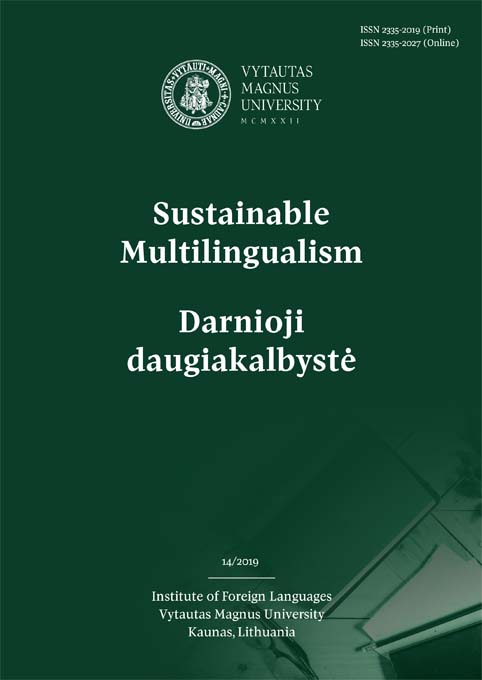Leksinės ir morfologinės vertimų kalbos ypatybės
Lexical and morphological features of translational Lithuanian
Author(s): Jurgita Vaičenonienė, Jolanta KovalevskaitėSubject(s): Language studies, Morphology, Lexis, Translation Studies
Published by: Vytauto Didžiojo Universitetas
Keywords: Corpus-based translation studies; comparable corpora; original and translated Lithuanian; ORVELIT;
Summary/Abstract: In Lithuanian public and academic discourse, discussions about the influence of English have received considerable attention. Much has been written on the English borrowings in Lithuanian or various translation strategies applied at word, phrase or syntactic levels of language, whereas there have been only few attempts to investigate how Lithuanian translated from English differs from original language. This is why we found it interesting to investigate lexical an morphological features of translated Lithuanian applying the methods of corpus linguistics. For research purposes, we used a morphologically annotated comparable 4 mln. word corpus of original and translated fiction and popular science literature ORVELIT. It has been found that translations deviate in certain ways from original Lithuanian. Translated Lithuanian has: a lower lexical density, higher proportion of function words, shorter sentences, and higher proportion of list heads; translated fiction has a lower lexical variability and smaller proportion of low frequency words, whereas in popular science translations, these differences are less evident. Keyword analysis has shown content differences in originals and translations and the overuse of personal and possessive pronouns in popular science translations. The distribution of content and function words differs in originals and translations and in different registers. Translated Lithuanian has: more verbs (especially finite forms and adverbial participles), but less nouns and adjectives; fiction translations have less and popular science more adverbs than originals; there are more pronouns and prepositions in both popular science and fiction translations; depending on the register, there are higher or lower numbers of conjunctions, particles and interjections. Some of the differences may be explained by the English language interference as: the overuse of the optional 1st person pronoun in subject position, the overuse of optional preposition “su” with instrumental case, or the overuse of optional link verb in the complex predicate. In other words, the English influence is seen in transferring certain features obligatory for analytical language where omission would be a more natural choice in original Lithuanian. These findings in most cases agree with the previous research on translationese of other languages. It is hoped that the identified tendencies to over- or under-use certain lexical and morphological features as a result of English language interference might appear to be useful when editing and translating.
Journal: Darnioji daugiakalbystė
- Issue Year: 2019
- Issue No: 14
- Page Range: 208-235
- Page Count: 28
- Language: Lithuanian

